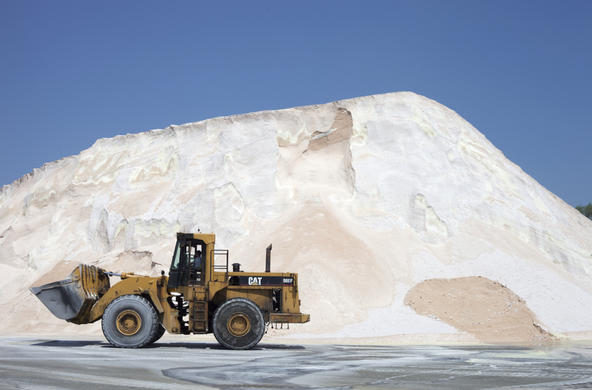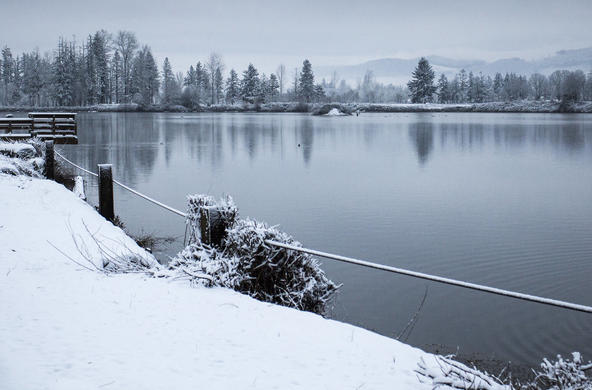There are 2.6 million miles of paved roads in the United States, and new roads are being constructed daily. When parking lots and driveways are factored in, there is already enough blacktopped surface in the U.S. to cover the entire state of Ohio. Paved roads and parking spaces come in handy for our nation’s drivers, but they also come with a serious unforeseen cost— the degradation of freshwater ecosystems.
In a recent Proceedings of the National Academy of Sciences paper, Dr. Sujay S. Kaushal, Dr. Peter M. Groffman, Dr. Gene E. Likens, and Ms. Victoria R. Kelly of the Institute of Ecosystem Studies, with colleagues, detail how roadway deicers are degrading the quality of northeastern waters, making them inhospitable to wildlife and compromising drinking water supplies. Their insights were made possible through long-term data recorded by the Institute of Ecosystem Studies, the Hubbard Brook Ecosystem Study, the Baltimore Ecosystem Study, the U.S. Geological Survey, and the City of Baltimore.
Most road salt is derived from sodium chloride (NaCl). By analyzing chloride concentration records in a range of northeastern waterways, from urban and suburban sources in New York’s Hudson Valley and Maryland's Baltimore County, to rural streams in the White Mountains of New Hampshire, the researchers concluded that freshwater salinity has been increasing at an alarming rate over the past 30 years. In the Baltimore study area, there was a strong relationship between the amount of impervious surface (i.e. roads and parking lots) and salt concentration.
Dr. Kaushal, a Postdoctoral Associate at the Institute of Ecosystem Studies when the research was conducted, commented, “There is a direct connection between the construction of new roadways and parking lots and freshwater quality. In particular, we haven’t paid attention to how rapid changes in human development and deicer use impact the watersheds that supply our region’s drinking water.” He added that, “We are hardening the watershed by feeding it a high salt diet that is detrimental to the health of aquatic ecosystems.”
The changes observed were not subtle. By accumulating in ground water and aquifers, road salt was linked to year-round increases in freshwater salinity. In New York and Maryland, freshwater salinity reached levels equivalent to 25% of the concentration of seawater.
In developed areas of Baltimore, chloride concentrations are already high enough to kill aquatic animals and alter wetland plant composition. Even in rural New Hampshire, where road density is lower, a number of streams were as saline as the tidal waters of the Hudson River estuary.
Dr. Groffman, a microbial ecologist at the Institute, noted, “Long-term records show that salinity concentrations are increasing, even in places where the amount of salt applied has not. Concentrations are high in the summer, not just in the winter when salt is applied to melt snow. This surprising and significant finding suggests that salt is accumulating in the environment. The salinity increases observed in rural areas, with minimal road coverage, indicate that the urban/suburban effect on stream chloride is prevalent over large land areas.”
If salinity levels continue to rise in the northeastern U.S., the paper's authors warn that within the next century many freshwater sources will be toxic to aquatic life and unfit for human consumption. Reversing the problem involves minimizing both road construction and our dependence on salt-based deicers.
Dr. Likens concludes, "We are at a point where we can say, without a doubt, that road salt is a freshwater contaminant. Unfortunately, it is both cheap and unregulated. More thought needs to be given to the quantity of salt applied, the ecological costs of road salt pollution, and available alternatives, such as potassium acetate and urea."






